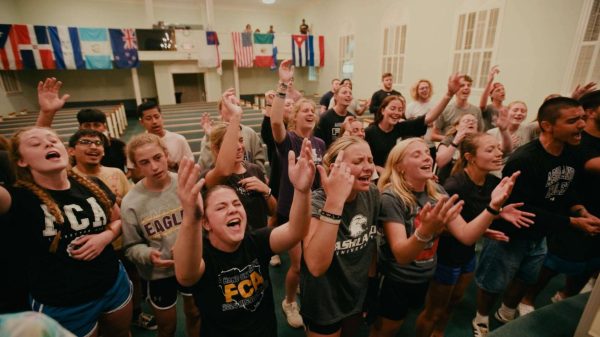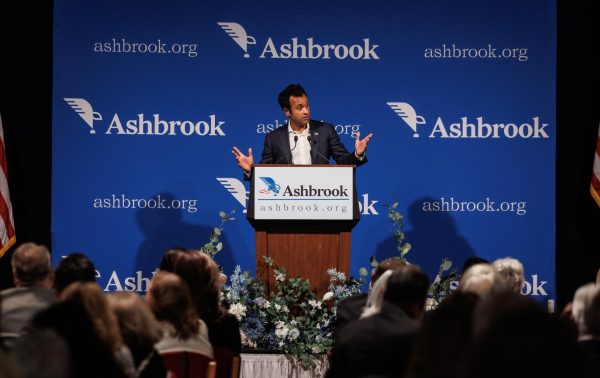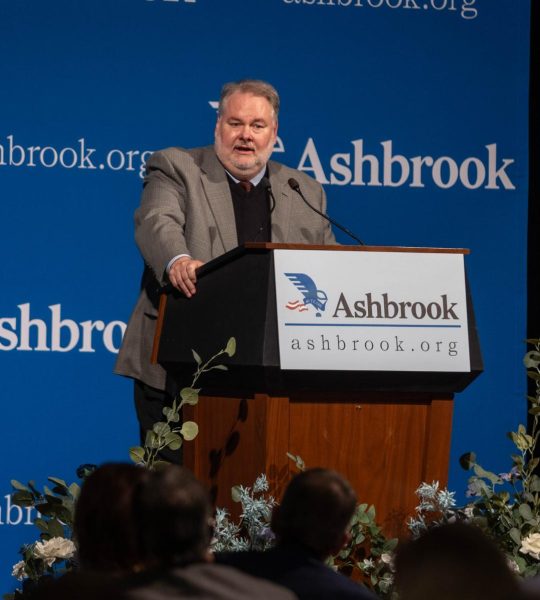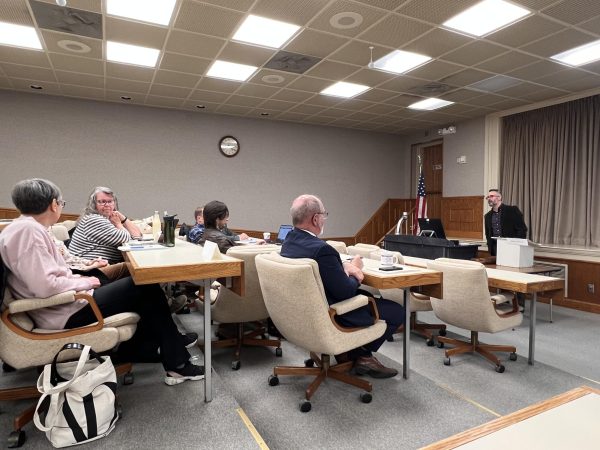Tuition guarantee serves Hiram well
September 18, 2010
Tuition guarantee programs do not benefit universities, according to Ashland University President Dr. Fred Finks. However, President Thomas Chema of Hiram College said HC’s enrollment has grown by 40 percent since they instituted their tuition guarantee in 2004.
A tuition guarantee is a program ensuring a locked rate, or four-year rolling rate, of tuition. Tuition rates never rise per class, but rather per consecutive class. Under a tuition guarantee, for example, class A would pay $10,000 each year for four years. Class B might pay $11,000 and class C might pay $12,000. But the tuition never changes for each individual class.
Tim Bryan, Chief of Staff of HC, said he believes HC is the only college in Ohio with tuition guarantee program, though he is not sure. He said he receives calls nationwide, asking about HC’s program and how to begin their own.
HC launched their tuition guarantee after their enrollment had fallen from 1,400 to 700 students, Chema said.
Through a year’s research, Bryan said most parents thought costs were an insurmountable pass after the second year.
“Their focus was so much on year one, as soon as the bill came in, they realized, ‘How are we going to pay for years two and three?’”
Since 2004, HC has made $45 million in campus improvements. There had not been a new building on campus since 1995. Chema said HC’s net tuition revenue is higher than before the guarantee, due to the enrollment increase.
Jim Kirtland, comptroller of the Business Affairs office at AU, said he could create a budget around anything, despite the work.
“It’s an interesting idea and something worth considering, but it’s a lot of work to operate that model,” Kirtland said.
Bryan said competitors have expected HC to raise tuition endlessly in between classes. So that instead of Class B paying $1,000 more for a four-year locked in rate, they might pay $5,000 more, and Class C would pay $10,000 more than that.
However, that hasn’t been the case so far.
While other universities have been consistently raising tuition by a six-percent average, HC’s has risen three percent in between classes. For the 2010-2011 academic year, not only did they keep the tuition guarantee, but they also instituted a one-year tuition freeze, so the tuition did not rise for the incoming freshmen.
“We don’t try to get around it.” Chema said on HC’s web site. “It is also a profound statement reflecting our historic commitment to affordability.”
The guarantee is only granted for four years, according to Chema. Fifth-year students must pay the tuition at the rate of the new incoming class. The guarantee does not cover room and board costs, which rise with the cost of living and inflation.
Colleen Murphy, vice president of marketing and enrollment management at AU, said AU retention of students has been declining since 2002.
“The reasons [for students not returning] are as varied as there are people out there,” Murphy said.
Finks said that, in the last 10 years, AU has averaged a retention rate of 70 to 72 percent. The national average is 70 percent.
“I don’t think we’re average, and I don’t want us to be average,” Finks said. “I think actually our university is unique. I think our commitment to students, I think Accent on the Individual, plays a major role on that point.”
Fink’s goal is to improve retention rates this year.
On a national level, within the first four weeks, students decide whether they will return the following year. This means that fitting in, being involved, liking the atmosphere of the college and transitioning from high school are more dominating than financial factors, Finks said.
He is convinced AU students are leaving for reasons other than financial aid.
“If they’re here, that means that they’ve found a way to pay their first year’s tuition,” Finks said.
Murphy is conducting exit interviews with the students transferring from AU. She said less than 30 percent of students say they are leaving because of financial reasons.
“I think it [a tuition guarantee] could be something that would be attractive to students,” Murphy said. “I would want to study it so that we see the successes and failures of the colleges who did it before us so that we can learn from their mistakes.”
In 2007, Molly Fratianne, executive vice president of student senate, said she and Nicole Kostura, 2008 graduate, tried to pass legislation for the presidential and director scholarship packages to be raised for current students who were paying the tuition increase that the freshmen were not.
“Presidential and director scholarships are tuition discounts, not real money transactions, so why shouldn’t all students who are required to pay the increased tuition also get the increased scholarship?” Fratianne said.
Finks said 95 percent of private colleges are primarily funded by tuition. The margin between the financial aid packages and tuition inflation for second-, third- and fourth-year students is the way colleges support themselves.
Tuition guarantee programs eliminate such a margin, which is why Finks said it would not work for Ashland University. The cabinet has already looked into it, and has discussed freezing both financial aid and tuition.
“If it [a tuition guarantee] would work for us, we would have done it because we have looked at financial aid,” Finks said. “I’ve sat in cabinet after cabinet meeting and trustees meetings where they’ve debated about ‘What can we do to fix this problem?’”
“All of us need another leg to the stool, and all of us are groping to find what the leg will be,” Chema said.
Chema said every college is enduring financial hardship, but the market cannot bend endlessly for rising tuition.











